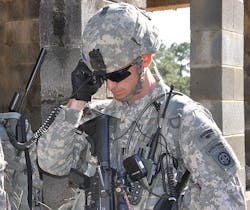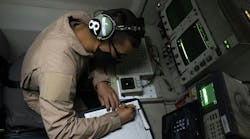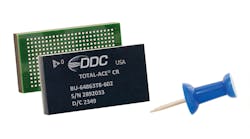The U.S. Department of Defense (DOD) spending proposal for fiscal year 2015 is part of an overall military spending plan of $601 billion next year, which includes $495.6 billion in discretionary budget authority, $79 billion in overseas contingency operations, and $26.4 billion in a new Opportunity, Growth, and Security Initiative fund. Fiscal 2015 begins next October 1.
Two of the Pentagon's largest C4I programs are the Tactical Networking Radio Systems -- formerly the Joint Tactical Radio System (JTRS) -- and the Warfighter Information Network-Tactical (WIN-T).
Related: Advanced cyber security for C4ISR computer systems is aim of Air Force cyber program
For fiscal 2015 DOD officials want to spend $541.5 million for Tactical Networking Radio Systems. This includes research and procurement, and proposes to acquire 3,294 advanced radio systems. This represents a reduction from current-year spending of $830.8 million to develop and buy 6,499 radio systems.
The Pentagon's JTRS program of record switched to the military department-management tactical networking Radio Systems program last year. This program seeks to transmit and receive voice and data to front-line warfighters with software-defined radio networking for combat vehicles, infantry, and aircraft.
For 2015, Army officials plan to begin low-rate initial production of the handheld, manpack, and small-form-fit hardware and software for field radios and certified waveforms. Funding in 2015 also would go to the small airborne link-16 terminal (SALT) for the AH-64 Apache attack helicopter. Funding also would continue for the mid-tier networking vehicular radio (MNVR) program.
Related: Dear God, what more can the U.S. military ask from the poor letter C?
Prime contractors involved in these programs include the Harris Corp. RF Systems segment in Rochester, N.Y., and General Dynamics C4 Systems in Scottsdale, Ariz.
In 2015 DOD officials plan to spend $919.7 million for WIN-T research and procurement, and acquire 1,280 WIN-T systems from prime contractor General Dynamics C4 Systems in Taunton, Mass., and subcontractor Lockheed Martin Corp. in Gaithersburg, Md.
WIN-T is the cornerstone for the Army's high-speed, high-capacity backbone communications network that links warfighters on the battlefield with the Global Information Grid (GIG).
Related: UAV command, control & communications
For 2015 DOD officials plan to upgrade 81 WIN-T increment 1 units; procure WIN-T increment 2 gear for one Army brigade combat team and one division. Also planned is continued development of software for WIN-T increment 3.
2015 funding would pay for integration of 179 modification kits for the AN/TRC-190 line-of-sight radios, provides tactical netops management systems to 48 non-WIN-T units, and supports single shelter switch (SSS) high-capability line of sight battlefield video teleconferencing, as well as upgrades to troposcatter communications systems.
The Pentagon's proposed budget for 2015 now goes to Congress, where lawmakers are scheduled to craft a final military spending plan by next fall.



